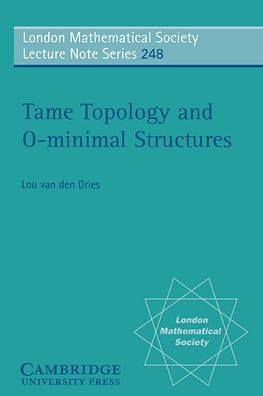5
1
9780521598385


Tame Topology and O-minimal Structures available in Paperback

Tame Topology and O-minimal Structures
- ISBN-10:
- 0521598389
- ISBN-13:
- 9780521598385
- Pub. Date:
- 05/07/1998
- Publisher:
- Cambridge University Press
- ISBN-10:
- 0521598389
- ISBN-13:
- 9780521598385
- Pub. Date:
- 05/07/1998
- Publisher:
- Cambridge University Press
79.99
In Stock

Product Details
| ISBN-13: | 9780521598385 |
|---|---|
| Publisher: | Cambridge University Press |
| Publication date: | 05/07/1998 |
| Series: | London Mathematical Society Lecture Note Series , #248 |
| Edition description: | New Edition |
| Pages: | 192 |
| Product dimensions: | 5.98(w) x 8.98(h) x 0.47(d) |
From the B&N Reads Blog
